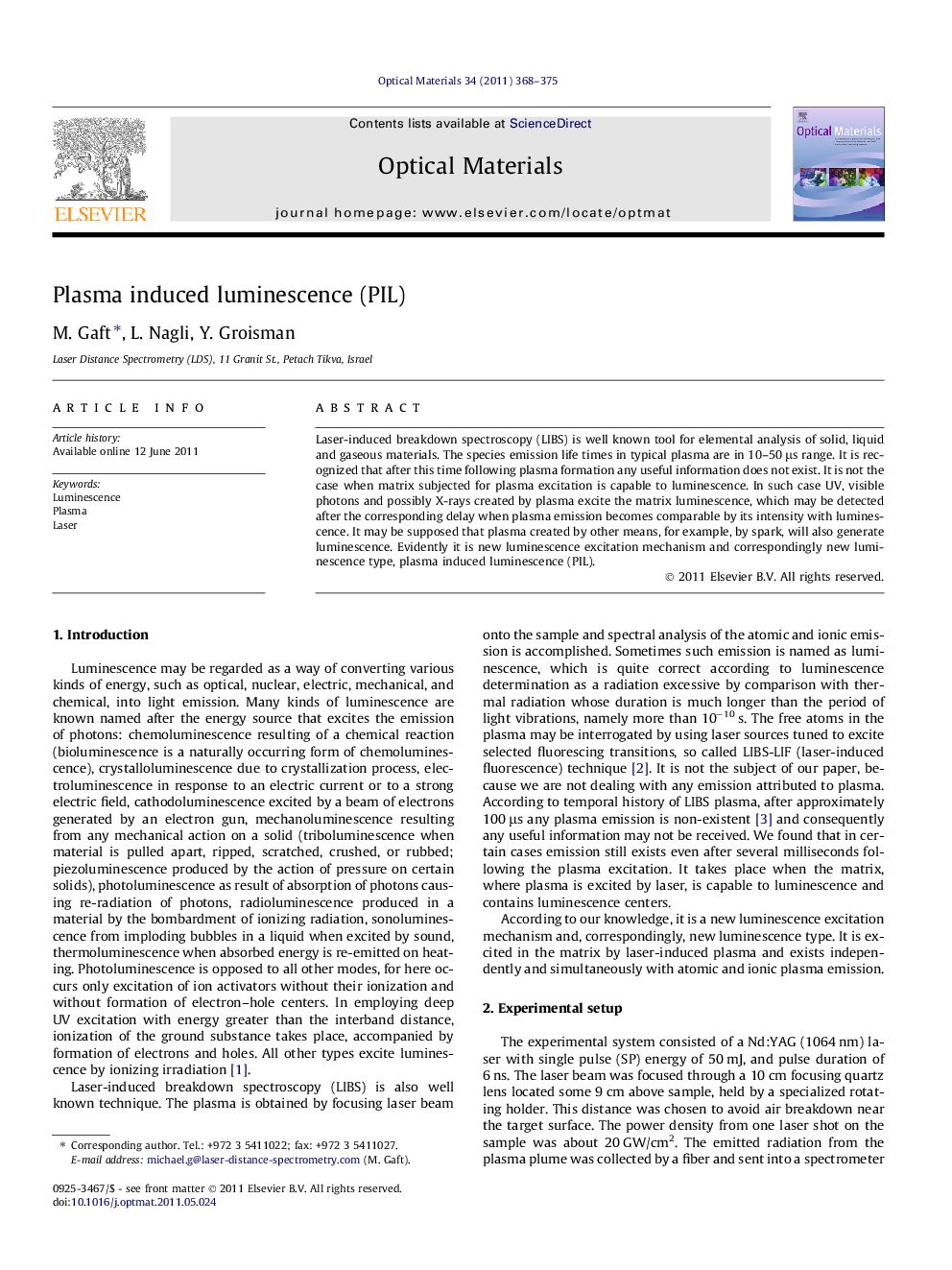| Article ID | Journal | Published Year | Pages | File Type |
|---|---|---|---|---|
| 1494672 | Optical Materials | 2011 | 8 Pages |
Laser-induced breakdown spectroscopy (LIBS) is well known tool for elemental analysis of solid, liquid and gaseous materials. The species emission life times in typical plasma are in 10–50 μs range. It is recognized that after this time following plasma formation any useful information does not exist. It is not the case when matrix subjected for plasma excitation is capable to luminescence. In such case UV, visible photons and possibly X-rays created by plasma excite the matrix luminescence, which may be detected after the corresponding delay when plasma emission becomes comparable by its intensity with luminescence. It may be supposed that plasma created by other means, for example, by spark, will also generate luminescence. Evidently it is new luminescence excitation mechanism and correspondingly new luminescence type, plasma induced luminescence (PIL).
Graphical abstractLaser induced plasma (bright spot) excites luminescence in CaF2-Eu situated at 15 cm distance with spectrum typical for Eu2+.Figure optionsDownload full-size imageDownload high-quality image (33 K)Download as PowerPoint slideHighlights► We found new luminescence excitation mechanism – by laser-induced plasma. ► We studied luminescence with short and long decay times after delay of 50–100 μs following plasma induction by laser. ► Direct and recombination excitations exist by UV–visible photons and X-rays.
